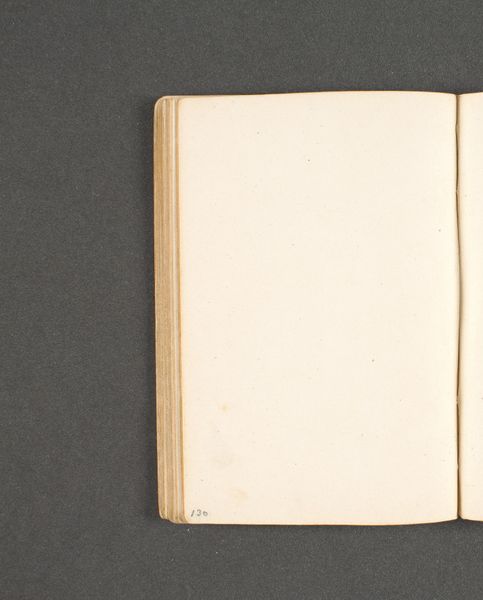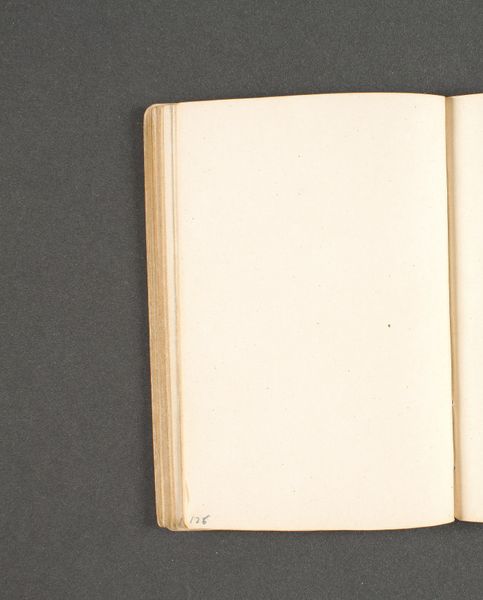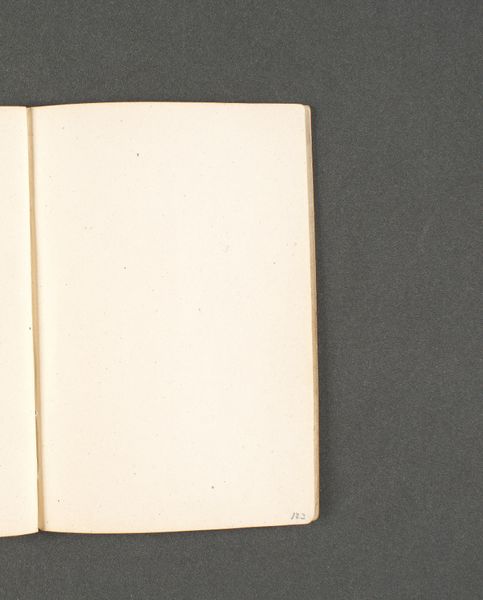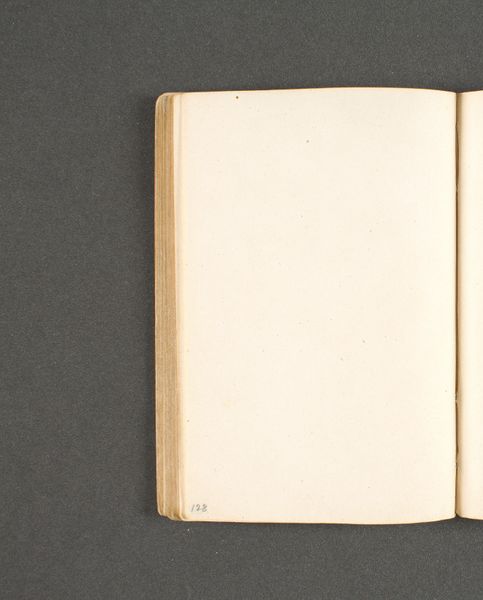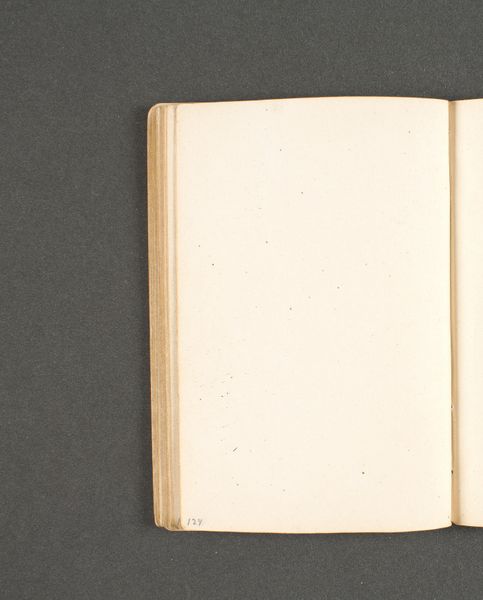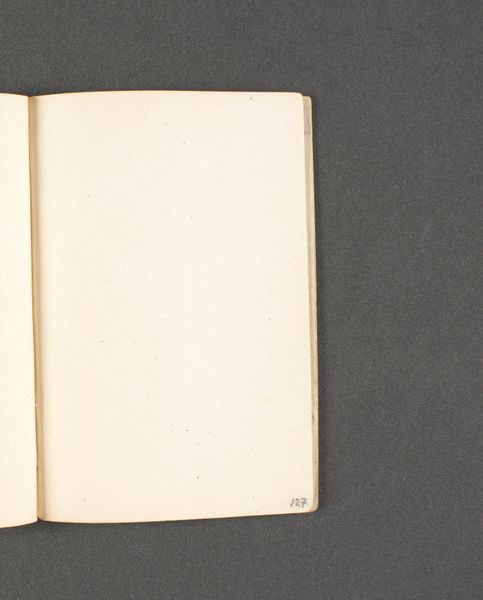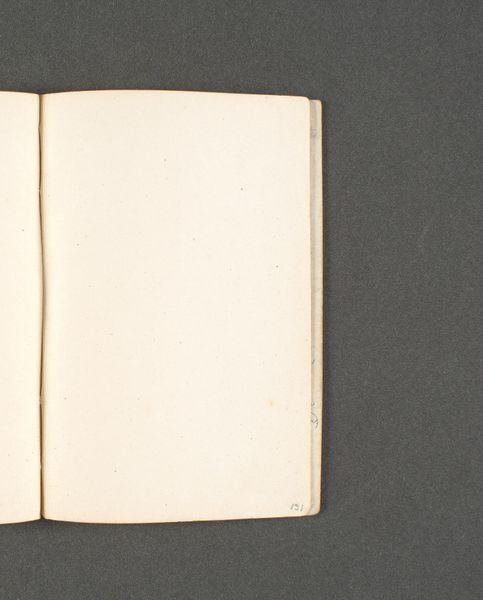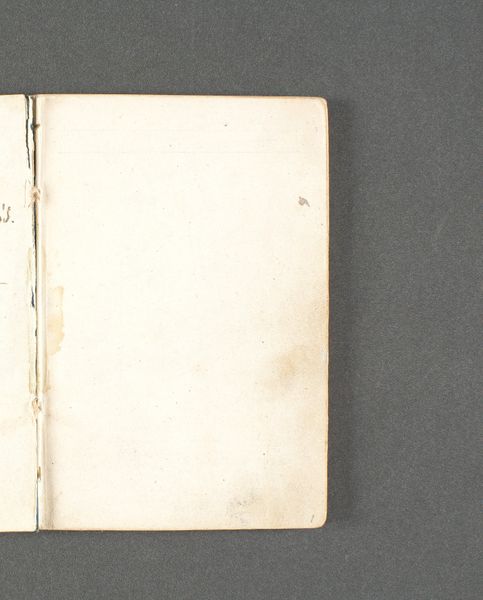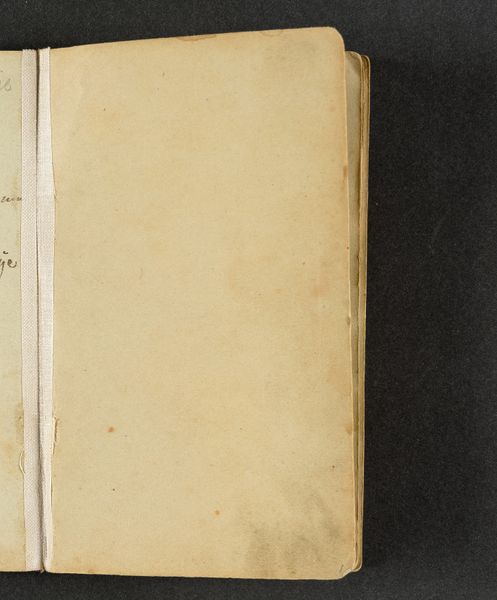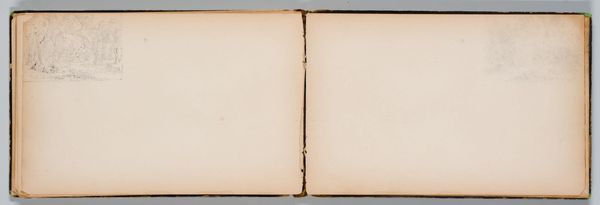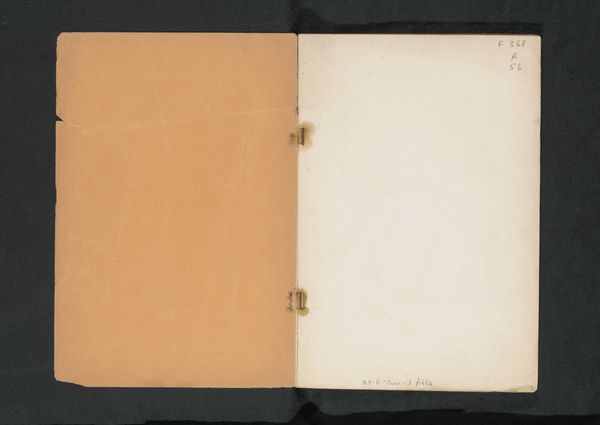
drawing, paper, ink, pencil
#
drawing
#
paper
#
ink
#
pencil
Dimensions: 131 mm (height) x 89 mm (width) (bladmaal)
Curator: Today, we're looking at "Blank," a drawing by Johan Thomas Lundbye, created in 1846. It's rendered with ink and pencil on paper, housed here at the SMK. The title intrigues me, setting the stage for many possibilities. Editor: It's disarmingly simple. An open book, unused pages waiting. I’m struck by how much potential is captured by the emptiness. The paper has aged to this warm, off-white tone. You can almost smell the old glue and the sense of history clinging to its spine. Curator: Lundbye's focus on landscapes and rural life in Denmark places this "Blank" within a framework of observation and documentation. We see Lundbye in a very pure state here—before the depiction. The context then is, what happens next? What gets recorded here and why? What perspective would be presented? Editor: Yes, considering the period – mid-19th century Denmark – the accessibility of such high-quality paper speaks to a certain privilege. Who had the resources to leave pages unused, a ‘blank’ canvas, really? This seemingly empty page embodies economic realities of the time, it tells us so much about both class and labour without a single line being drawn on it. Curator: Absolutely. The unused page speaks volumes. What kinds of stories are permitted, and who has the privilege of recording their view of events? What voices go unwritten in these pages? What does 'blank' represent as a form of power or the power to censor? Editor: Considering his known interest in landscape, what he choses NOT to record on it tells us a great deal, also! This book might become a record of landscapes and the romantic vision of rural Denmark. The unused materiality, as much as it's artistic merit, poses many political and theoretical considerations! Curator: It reframes the art piece to focus on access and the ability to create, and by focusing on ‘blank’ rather than its utilization makes one question the role of observer, power, and representation in that creation. I love the piece now more than before. Editor: Agreed, sometimes the most potent statements reside not in what is depicted, but in what's left unsaid, or, rather, unwritten! The book itself acts as a container of possibilities, which in turn becomes thought-provoking.
Comments
No comments
Be the first to comment and join the conversation on the ultimate creative platform.
